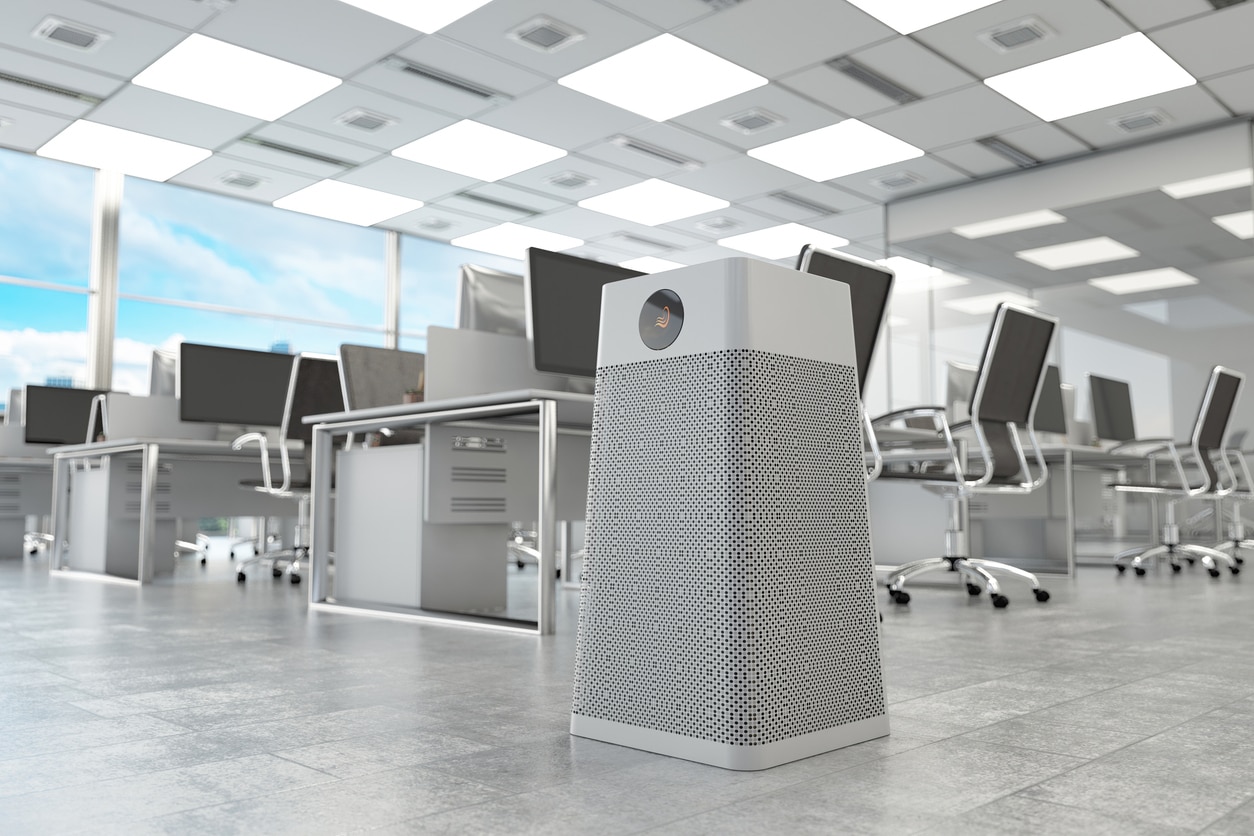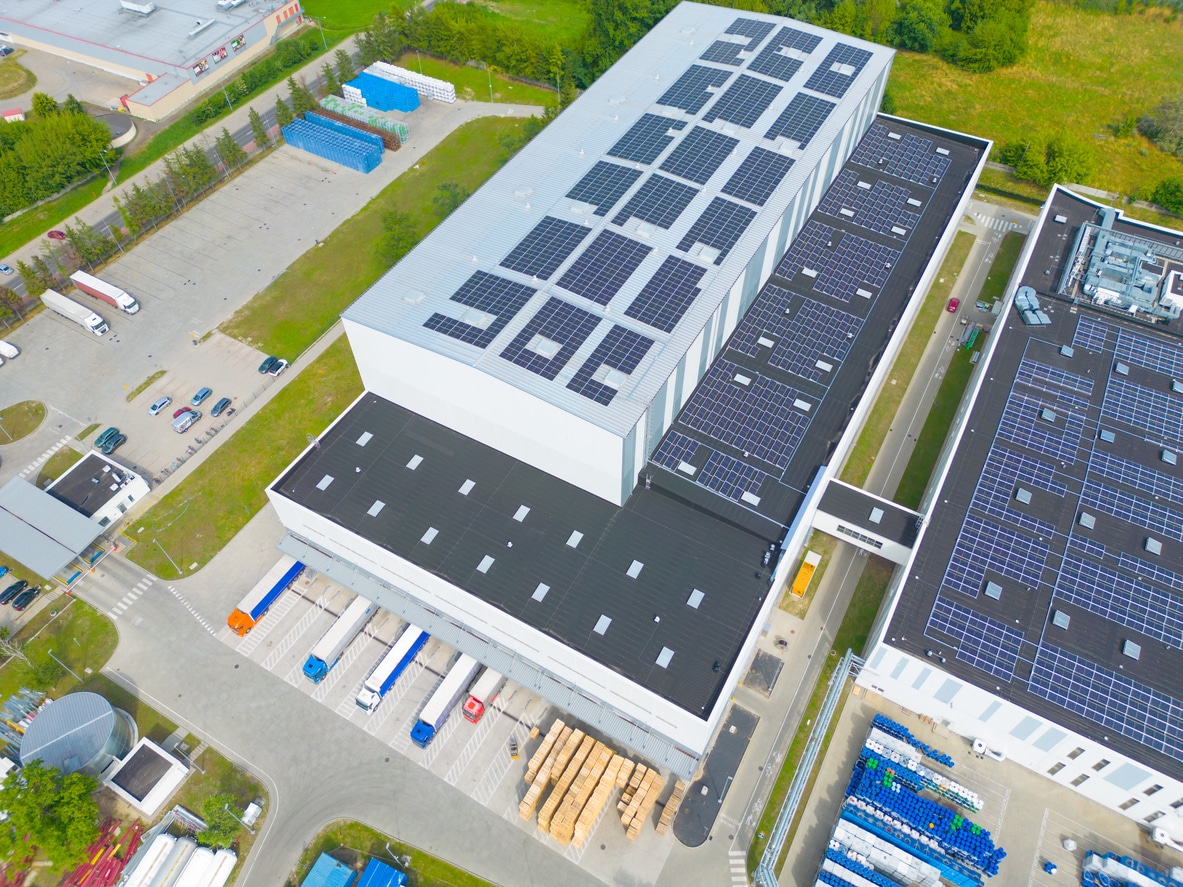Reflecting on a Year of Sustainable Commercial Construction: Trends and Innovations for 2026 Construction trends…

Enhancing Indoor Air Quality in Commercial Buildings for Healthier Workspaces
Indoor air quality is no longer a background concern—it defines the health and productivity of every commercial workspace. Modern building envelopes that seal out noise and moisture can also trap pollutants, leading to stale air and hidden risks.
At Schonsheck, we integrate HVAC and passive‐design strategies from the earliest planning stages to deliver fresh, clean air throughout Michigan office towers, retail centers, and mixed‐use developments. Find out how we combine engineering, filtration, and intelligent controls to create healthier workspaces that boost wellbeing and performance.
Key Contributors to Poor Indoor Air Quality
Inadequate Ventilation & Recirculation
When buildings prioritize energy savings over fresh air, pollutants accumulate rapidly. Reduced outdoor-air intake traps carbon dioxide, volatile organic compounds, and airborne viruses in busy zones. In open-plan offices, unused conference rooms can become stale reservoirs that bleed contaminants into common areas.
Supply registers may deliver conditioned air unevenly without balanced airflows, creating dead zones where stale pockets form. Integrating energy-recovery ventilators helps recover heating or cooling energy while continuously refreshing air, and zoning controls ensure unoccupied areas don’t sacrifice indoor-air quality for efficiency.
Off‐gassing from Building Materials
Beyond new-construction emissions, routine maintenance products contribute to indoor pollution. Cleaners, disinfectants, and aerosol sprays release solvents and formaldehyde that linger long after application.
Even approved low-VOC paints emit trace chemicals during curing, especially in warm, humid months that accelerate off-gassing. Carpets installed over concrete slabs can trap moisture and microbial VOCs below, leading to persistent odors.
Specifying certified green-label materials and establishing a post-construction flush-out period with 24-hour ventilation dramatically cuts initial contaminant loads.
Particulate & Bio‐Contaminant Loads
Fine particles arise from occupant activities—typing, photocopying, and shoe traffic on carpeting—and interact with dander, mold spores, and outdoor allergens. HVAC coils accumulate biofilms that release bacteria and fungal spores when the system cycles on.
Pressure imbalances draw pollutants from restrooms and kitchens into workspaces. Deploying HEPA-level filtration in recirculation loops and positioning portable air cleaners in high-traffic zones addresses residual particles. Also, maintaining indoor humidity between 40 and 60 percent prevents mold growth on cold surfaces and reduces static electricity that resuspends dust.
Technologies & Design Choices to Improve Indoor Air Quality
High-Efficiency Filtration & UV-C Germicidal Systems
Upgrading to MERV 13 or higher filters captures fine particulates down to 0.3 microns, including pollen, smoke, and bacteria. Installing UV-C lamps inside air-handling units inactivates viruses and mold spores as air circulates. These lamps mount on condensate pans or return-air plenums where they remain out of sight yet deliver continuous disinfection.
When combined, filtration and germicidal irradiation create a two-stage defense that keeps ductwork cleaner between maintenance cycles and delivers noticeably fresher air at every vent.
Demand-Controlled Ventilation & CO₂ Sensors
Rather than running fans at full capacity around the clock, demand-controlled ventilation uses CO₂ sensors to gauge occupancy and adjust fresh-air intake automatically. In conference rooms, open-plan offices, or auditoriums, elevated CO₂ levels trigger increased outdoor-air flow. When spaces are empty, intake attenuates to economize energy.
This real-time control satisfies ASHRAE outdoor-air requirements while minimizing heating or cooling loads, striking an optimal balance between indoor-air quality and operational efficiency.
Integrating Green Walls and Plant Life
Incorporating living plant walls and interior landscaping brings direct nature benefits to commercial interiors. Green walls utilize modular planting systems mounted on walls or freestanding frames, with integrated irrigation and drainage to keep foliage healthy. These installations filter airborne toxins, boost humidity control, and absorb ambient sound, creating calmer, more engaging work areas.
Low-maintenance species like pothos, philodendron, and peace lilies thrive under LED grow lights and office lighting. We coordinate with landscape designers to specify irrigation lines in concealed troughs and select plant palettes that complement architectural finishes. Adding greenery also signals a commitment to occupant wellness and supports WELL Building certification goals.
Passive Design Strategies for Healthier Workspaces
- Strategic placement of operable windows for cross-ventilation
- Use of light shelves and atria to supplement daylight and reduce artificial lighting
- Incorporation of indoor greenery and living walls to absorb pollutants
- Selection of low-VOC paints, sealants, and adhesives in finishing
- Thermal mass materials like concrete and stone help moderate temperature swings
Health & Productivity Benefits of Cleaner Air
Reduced Sick Days & Respiratory Issues
Studies show that improving indoor air quality can cut employee absenteeism by up to 20 percent. Clean air reduces irritation of the eyes, nose, and throat, easing asthma symptoms and lowering the incidence of headaches and fatigue. Tenants in buildings with upgraded filtration and ventilation report fewer cold-like symptoms and a more comfortable environment, translating into lower health-care claims and a more resilient workforce.
Enhanced Focus, Cognitive Performance & Employee Satisfaction
Better air correlates directly with improved cognitive function. In controlled tests, staff working in high-air-quality spaces scored up to 15 percent higher on critical-thinking tasks and experienced fewer distractions. Natural ventilation cues and biophilic elements boost mood and reduce stress, while consistent temperature and humidity control help occupants concentrate longer. Together, these factors foster a workplace culture where employees feel valued and empowered to perform at their best.
Partnering with Schonsheck for Healthy Workspaces
Early collaboration ensures indoor air quality goals align with structural and budget requirements. Schonsheck’s design-build approach brings architects, engineers, and IAQ specialists together to specify energy-recovery ventilators, UV-C modules, and high-efficiency filtration during schematic design.
We source low-emission materials, model airflow with computational fluid dynamics, and integrate CO₂ sensors into the building management system. Our teams also help clients pursue LEED and WELL certifications by documenting IAQ performance and commissioning ventilation systems to meet industry standards.
Breathe Easy with Schonsheck Commercial Construction
Cleaner air starts at the planning phase and extends through construction, commissioning, and ongoing maintenance. By embedding IAQ strategies into every project, Schonsheck delivers healthier, more productive environments without sacrificing efficiency or aesthetics. Let us tailor a turnkey solution that keeps your occupants comfortable, focused, and thriving.
Leading Indoor Air Quality Solutions in Michigan
Serving Wixom, Detroit, and commercial clients across the Midwest, Schonsheck offers turnkey indoor air quality improvements—from high-efficiency filtration and UV-C germicidal systems to demand-controlled ventilation and passive design features. Our design-build teams handle permitting, installation, commissioning, and performance verification so you receive documented, lasting results. For healthier workspaces and measurable productivity gains, reach out online or call us at (248) 669-8800.




